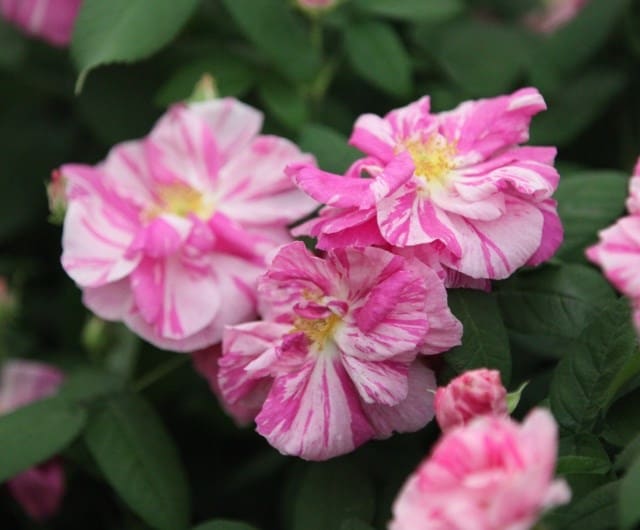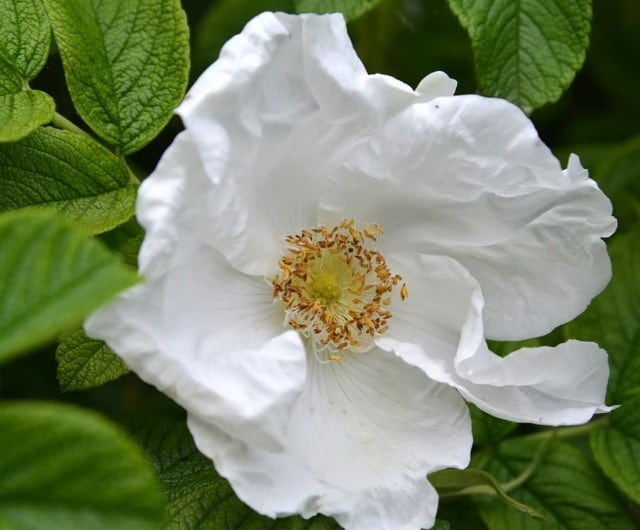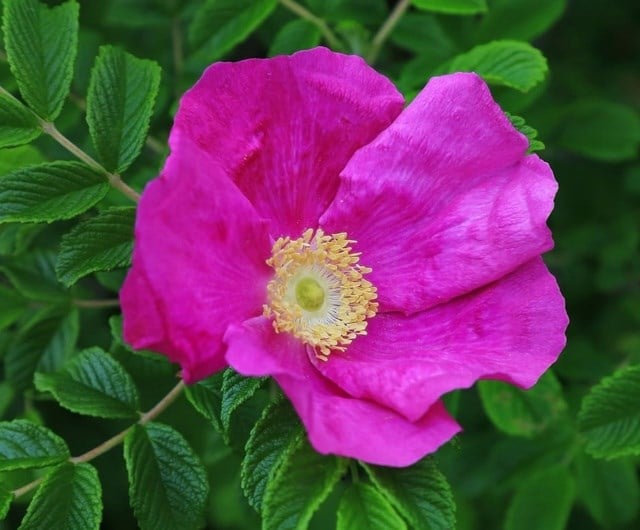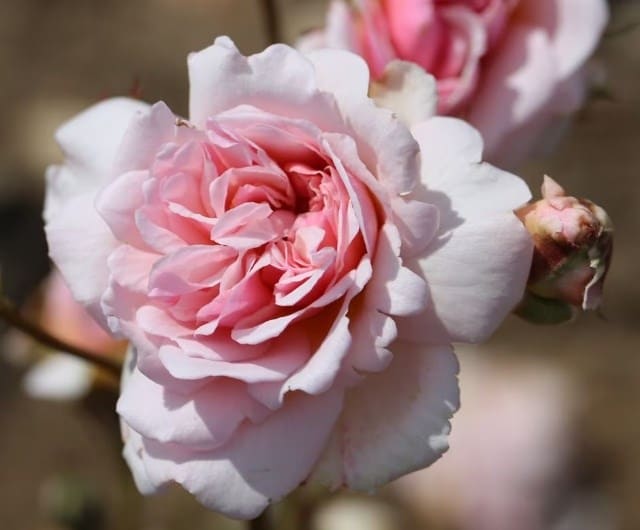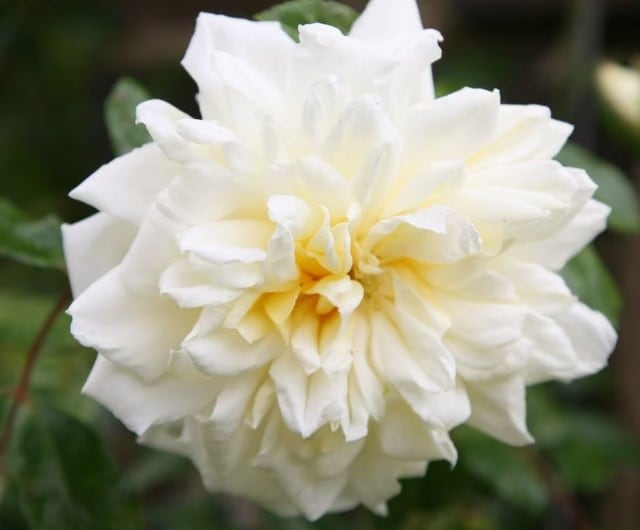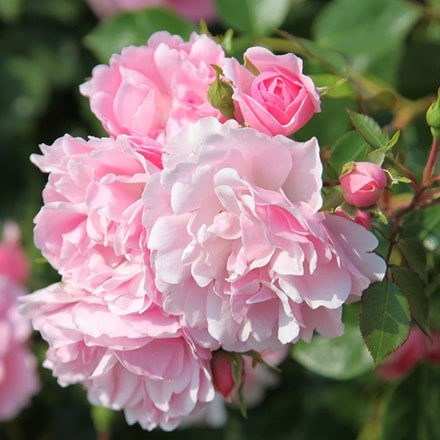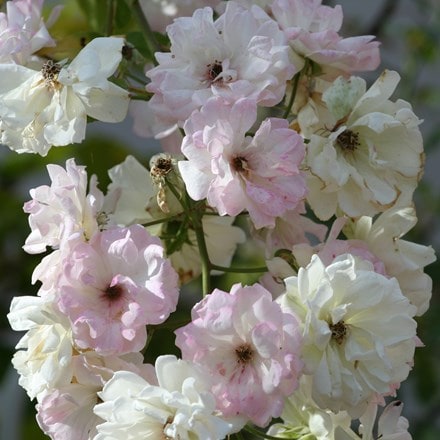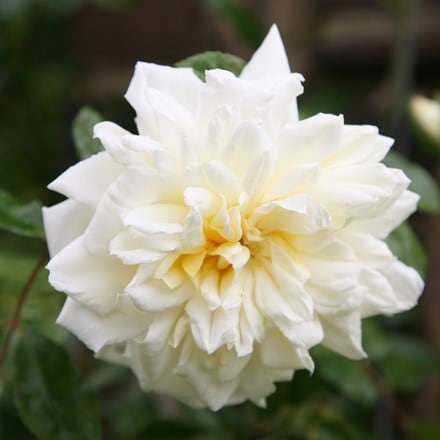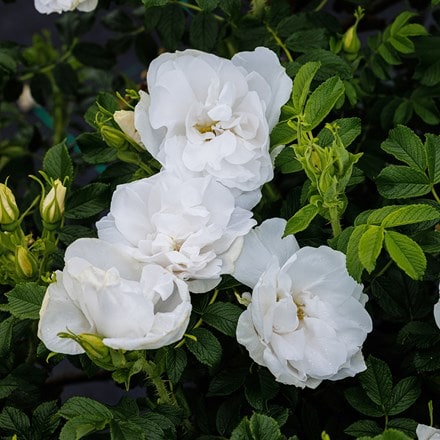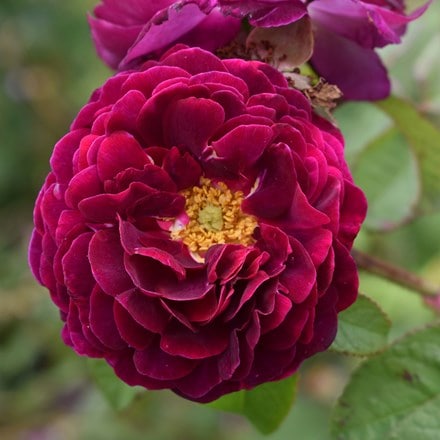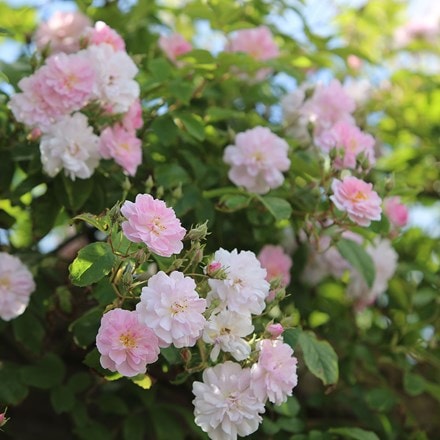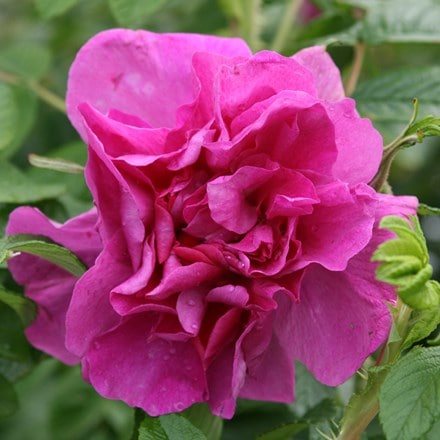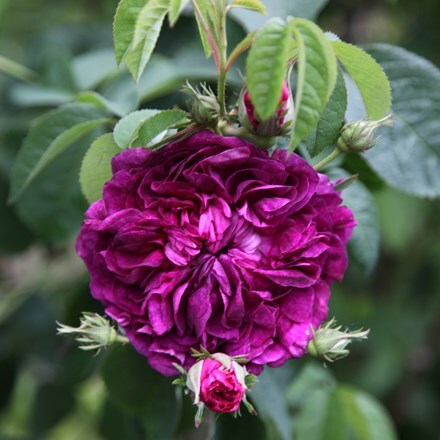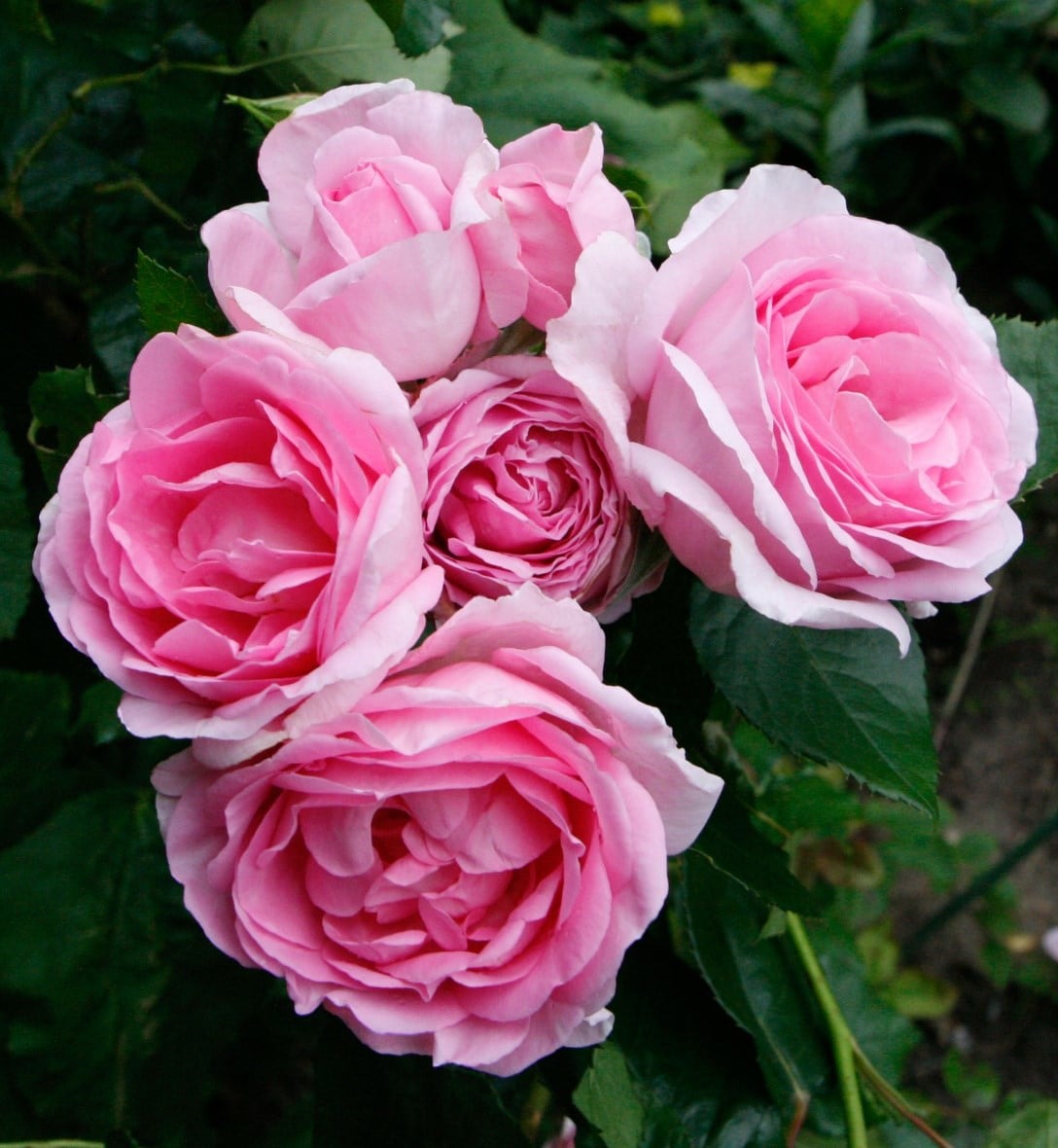The best roses for poor soil
Many often perceive roses as delicate and demanding, requiring constant attention and specialised care. However, like all plants, roses flourish with suitable growing conditions and ideal garden soil.
Knowing your roses will help enormously when choosing what to plant. Roses come in a vast variety, from large and branching to neat and compact or ground cover to upright or climbing. Also, some roses are more tolerant of poor soil and will thrive in locations where others will suffer.
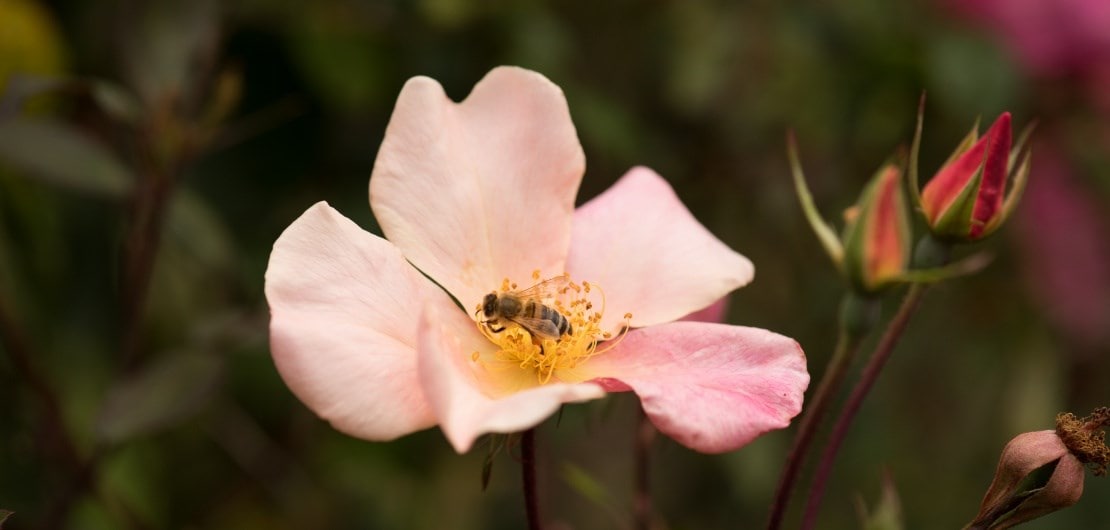
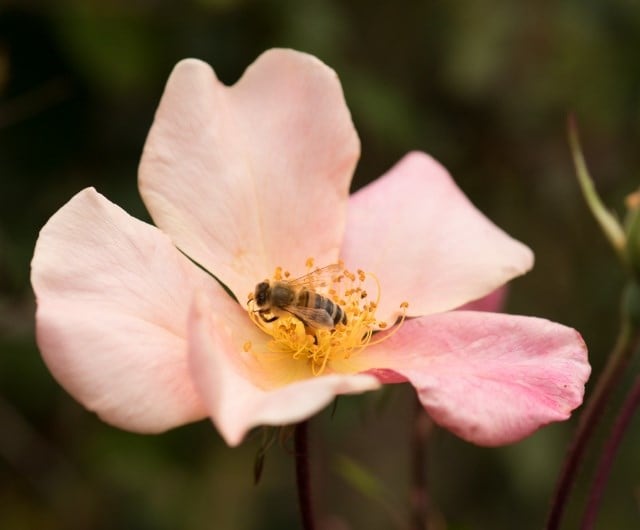
Roses that are most tolerable of poorer soil
Species and simple-bred roses tend to be healthy and more tolerant of poorer soil. However, they produce single flowers in late spring and early summer. So, they are more short-lived than most roses.
On the plus side, they set hips that birds often greatly appreciate. The stems are thorny, so they are helpful as free-standing shrubs or in wilder areas rather than flower borders. They also make good screens or hedges, which will help deter unwanted visitors.
Good species roses is Rosa canina, the ‘dog rose’ or ‘wild rose’. This tough rose is tolerant of most soils and sites, being particularly useful in coastal areas.
It has pale green leaves and a vigorous, sprawling habit that will quickly create a thick, prickly hedge in no time. The pink-flushed, white flowers have a lovely scent and appear throughout summer. Glossy bright vermillion hips form as the blooms fade, adding interest to the autumn garden.
Gallica roses
The Gallica roses, from dry and warm parts of Southern and Central Europe, are also good on poorer soil. The foliage is matt and grass-green with an upright habit. Therefore people use these mainly pink roses as hedging. In time they can sucker, controllably so, and produce a thicket given time.
Well-bred gallicas include the dark-purple Tuscany Superb. It has flat open flowers that display a golden boss of stamens, making it insect-friendly.
‘Charles de Mills’ is a more petal-packed, taffeta-textured rose. It eventually displays a touch of leaf green in the middle of its port-wine flowers. These mid-19th-century roses add depth to paler pinks, and just flowering once shouldn't put you off, for they are both excellent.
Alba roses
The Alba roses, which have greyer foliage, are also good on poorer soil. We consider 'Königin von Dänemark’ (Queen of Denmark) the best of all. Soft-pink quartered blooms, flower once in July extremely well. It stood the test of time and will tolerate poorer soil and a poor position, too.
Rugosa roses
The other group of roses that thrive on poor soil is the Rugosa roses, bred from a Japanese species found in sandy soils. Rugosas do not enjoy limey soil, which turns their foliage yellow, but they will do anywhere else on well-drained soil. These roses have wrinkled (or rugose) foliage, which is green and rounded. The single or semi-double flowers are highly scented, and large hips can follow sometimes.
The benchmark variety, 'Roseraie de l’Haÿ’, is a great choice. The fragrant crimson flowers are more petal-packed than most Rugosa roses, so hips do not form often. However, this ample rose will flower in some shade and is best paired with other shrubs.
The loosely double-white ‘Blanche Double de Coubert’ makes an excellent hedge and flowers over a longer period, although there are no hips. Prune lightly every spring because there is usually some dieback after winter.
Hybrid Musks
Breeders developed Hybrid Musks in the dry county of Essex, so they thrive on thinner soils and warm positions. Although variable in habit, they are all highly scented.
One of our favourites is ‘Buff Beauty’. A large shrub rose that needs a warm site and time to establish. ‘Buff Beauty’ begins to flower in July, after most roses, and continues until late autumn. Coppery red foliage flatters the warm buff-apricot flowers.
Rambler roses
Rambler roses also tolerate poor soils. Most only flower once, but they do it magnanimously. Add a viticella clematis, such as ‘Étoile Violette, and allow it to scramble through to provide late-summer flower.
Habits vary from modest to rampant and the new growth is often vigorous. So, the usual method is to tie the new shoots in before Christmas whilst cutting out some of the older wood. All take time to settle in.
’Paul’s Himalayan Musk’ bears clusters of pale pink flowers in late June. However, it will easily scale a mature tree, cascading down the other side in sheets of flowers. Therefore we would avoid it in a small space.
The lemon-white ‘Albéric Barbier’ is a moderate rambler rose that blooms late and has a charming appearance. Or try the compact ‘Phyllis Bide’. It bears clusters of sweetly scented salmon-pink flowers. Although this is thorny so site it carefully!
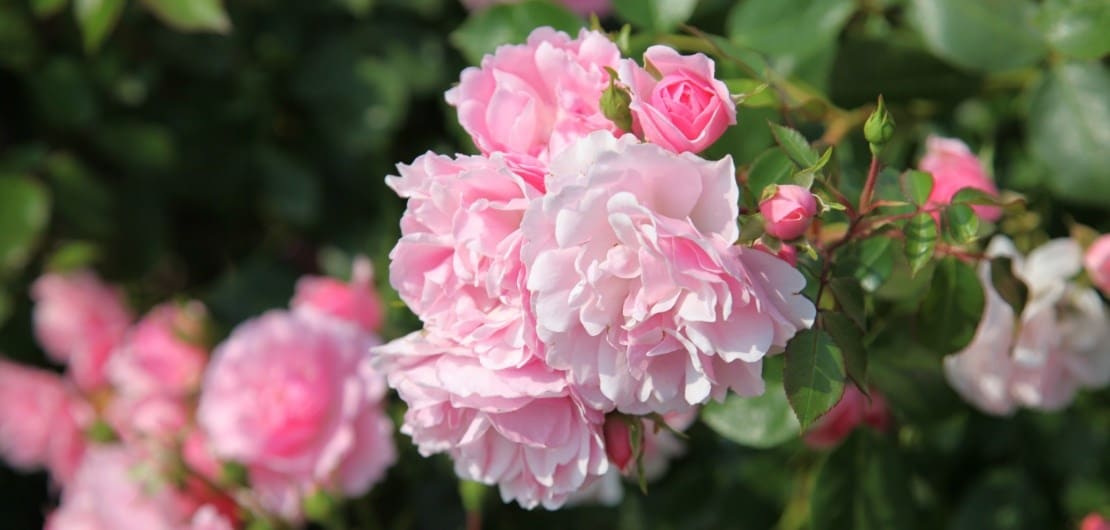
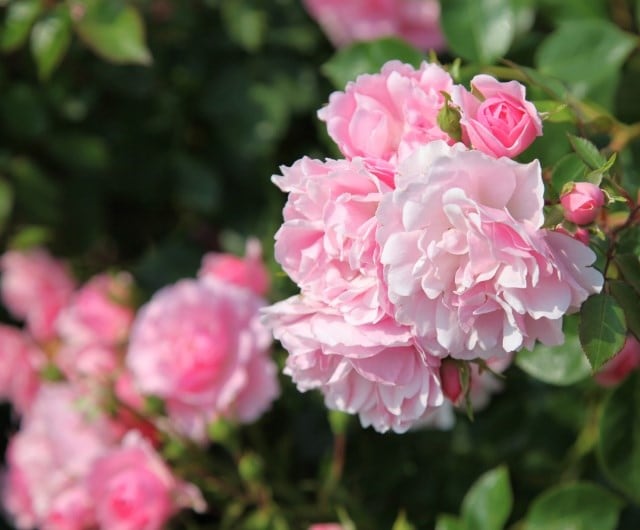
The best rose for poor soil
Saving the best till last. Perhaps the best rose for impoverished soil is the lightly fragrant pink shrub rose ‘Bonica’, bred in France by Meilland in 1981. Hardly ever out of flower and is a manageable size, up to four feet (1.2m) at most. Each cluster can have as many as twenty flowers, and it’s extremely healthy.
The best soil type for roses
Roses prefer well-draining soil that retains moisture to flower fully. Loamy soil is ideal for roses; other soil types include clay and sandy soil. Clay soil is particularly dense, which may lead to waterlogging, and sandy soil can drain too quickly.
As we've mentioned, certain roses thrive in poorer soil conditions and you can create a rose garden in any soil type. However, there are plenty of ways to improve your soil so that you can grow any roses.
How to get the best soil for roses
Adding organic matter, such as compost, is the best way to enrich your poor soil. Compost gives your roses the nutrients they need. Compost also increases water retention and drainage, which is better for the root system. Organic matter is a popular alternative if your garden has poor soil, such as clay or sand.
Soil preparation is key; you may already have organic matter to help the soil. You can use leaf mould and spread it across rose bushes and parts of the garden to help enrich your soil.
Use high-quality planting soil for roses that are less tolerable to poorer soil. This ensures they receive the nutrients they need to thrive.



